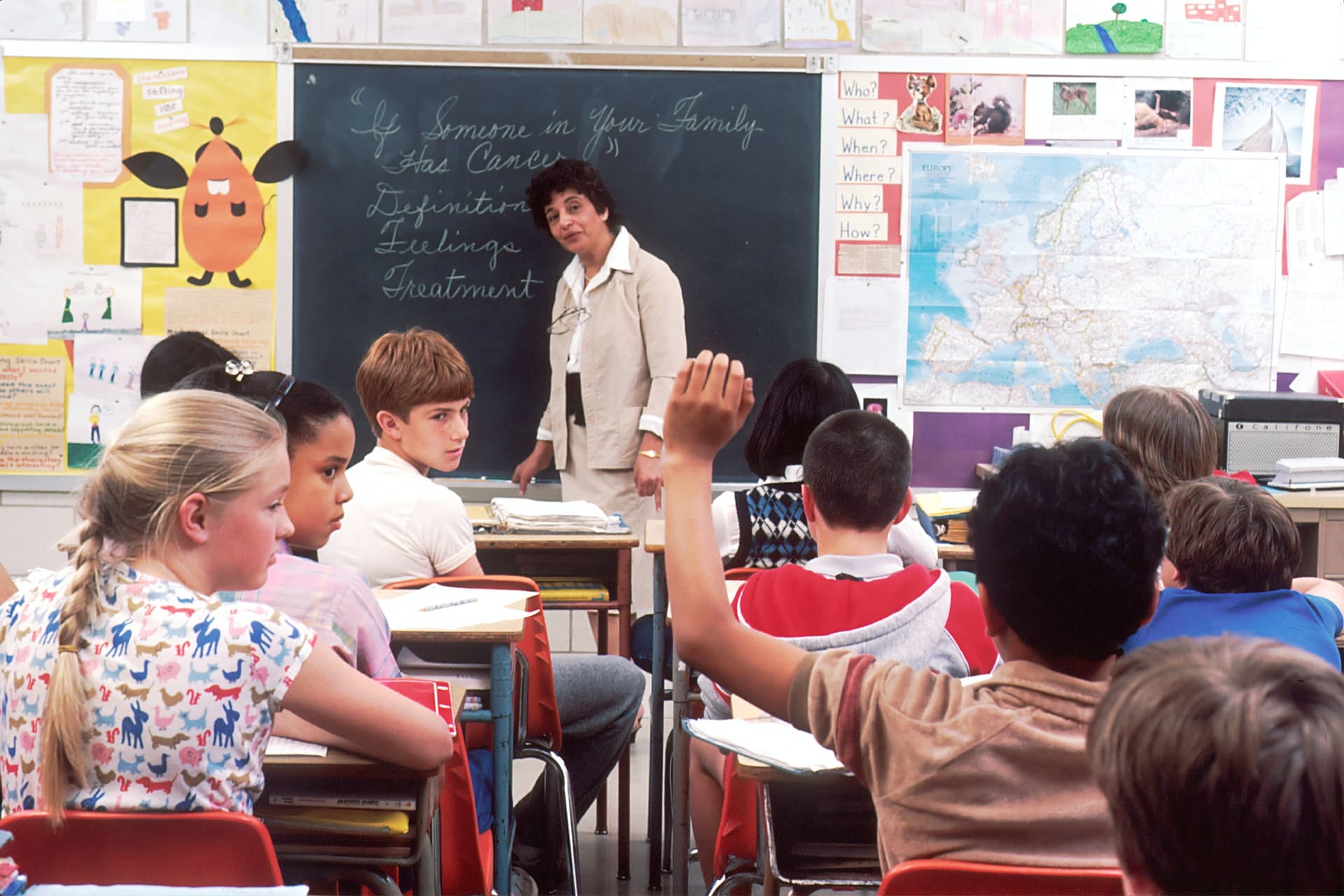Kids can learn multiplication from a young age. Research shows that kids learn multiplication in second grade. They even start to grasp the division in the third grade. With time, their level increases. They become advance in these mathematical skills.
Sometimes kids learn multiplication before they even start their formal schooling. It’s never too early to introduce kids to the concept of maths! Parents often wonder when their child will be old enough to learn multiplication. When is the right time for this? Well, it is different for every child. It even depends on many factors. Like readiness, development, and interest.
What grade is appropriate to learn basic math concepts and multiplication?
Children should be in second or third grade to learn math concepts. Fourth grade is a good time to start mastering algebraic rules and techniques. In fifth grade, they start to solve difficult multiplication problems.
Let us see a detailed view of when children learn the multiplication skills-
Second-graders
Second grade is the grade where children learn multiplication. They, in this grade, start to add together equal groups. Like: 2+2+2 = 6, that is same as 2 x3 =6. This repeated addition helps in learning the concept of multiplication.
They even learn how to visualize and show the multiplication concept. Like we know that 3x 3 is 9. Children can make three rows and three columns to show this multiplication process. This helps the child to develop an understanding to present one thing in other words. They even learn to know the different shapes and patterns.
Third-graders
When children go to the third grade, they learn about division skills. As they already have learned multiplication earlier, this helps them in making connections with the division and multiplication process.
Fourth graders
In the fourth grade, children learn how to do the multiplication of 2-digit numbers to another 2-digit number.
Many children start to do large number multiplications by fifth grade. They already know tables very well. So, with an advanced level, they start grasping and connecting earlier things with new ones.
At what age, should a child learn multiplication tables?
A child starts learning tables at the age of 9. They start learning when they have understood addition and subtraction. Many kids learn tables earlier than the required age. Some kids struggle with learning tables. But it is not something that one can not correct.
Parents can teach math to their child if he or she is facing difficulty in learning the tables. They can make the children understand that tables are necessary for doing multiplication and division. Children need an understanding of the number system For mastering tables.
When do kids learn division?
Kids start to learn division when they are about four years old. The difficulty of division varies by the number being divided. It is common for kids to have difficulty with division problems that have uneven remainders.
When kids learn division, they are first taught how to divide without having to write the multiplication equation. This wants them to do mental math. Learning division helps children to understand multiplication better. They come to know about different factors like quotient, dividend, and divisor.
In third grade, children start to do the repeated subtraction. Then in fourth grade, they start to understand how to divide 3-digit numbers into 1 or 2-digit numbers. By fifth grade, they go to an advanced level. They learn how to divide four-digit numbers into four-digit numbers.
Children learn both multiplication and division before going to middle school. In the sixth grade, they even get introduced to decimals and graphs.
Why do most kids find difficulty in doing multiplication and division?
Many children find multiplication and division quite tricky. The reason is that they are taught the rules in reverse order. Some children even find difficulty in knowing basic maths, known as number sense.
It is because the way most first-graders learn elementary maths in primary education through memorization. It is not through understanding. That means you can sometimes get away with using tricks or shortcuts to get the desired correct answer. But it will be without understanding exactly why it works–just so long as you get it right. Some kids even face problems with memorizing maths formulas and shortcut tricks. It is due to a lack of focus and understanding.
If you are a parent who wants to make your child better in maths. Then keep the focus on them from the starting of their school year. In the first grade, children learn to do basic mathematics. So teaching math with a focus in first grade can help children to grasp basic knowledge more efficiently.
How to learn Multiplication facts?
Multiplication facts must be memorized in sequence. In this way, it is easy to multiply larger numbers. It can be challenging to learn how to multiply without learning the best way to memorize the products of different two-digit numbers. After four lessons, most children can easily recall all of their math facts for twelve, ten, nine, and five times tables with 100% accuracy.
However, most children face issues in this. Well, if one faces difficulty, then parents should make them understand the basic concept. They can do this by breaking the concepts down into smaller sections.
Like you can make your children know repeated addition by giving easy examples. For instance: 2 + 2 = 4 is same as 2 x 2 =4
You can make them know that if anything is multiplied by 0, then the answer comes as 0. If the number is multiplied by 1, then the answer will be that number. Children learn multiplication facts faster in visual form.
How many total multiplication facts are there?
Well, there are several multiplication facts. We know that the numbers are indefinite, hence the multiplication facts. In their school life, from grade 1 to 12, children learn 144 of them.
One can even learn more than 144 facts according to the needs and requirements. Multiplication facts are even represented in the time tables. Earlier mathematicians and physicians even used to consider these facts when doing calculations.
What is the multiplication rule?
The commutative multiplication rule is if you multiply two numbers together, then the sequence of numbers in which you have done the multiplication does not matter. For instance: 6 X 2 = 18 is same as 2 x 6 = 18
The associative property tells – “When doing multiplication of group of numbers together, then the grouping of numbers does not matter”. One can change the grouping of numbers or their sequence, but the answer will remain the same. For instance: 3 x (4 x 5) = 60 is same as (3 x4) x 5 = 60
The identity property of multiplication says – “If you are multiplying a number with 1, then you will get the same number”. For instance: 4 x 1 = 4
The multiplication rule of zero is quite different from others. In mathematics, if we multiply any number with another number, the result will be bigger. But if one multiplies any number with 0, the answer comes as 0. For instance: 5 x 0 = 0, 1x 0 = 0, 0 x 0 =0..
How many times a day should children practice their math skills?
It’s not a good idea to pressure your child with specific practice schedules. All kids are different, and what appeals to one may be boring for another. Some children need more practice at math because they find it challenging. While those who find maths easy might only need the occasional review.
There is no one-size-fits-all answer to how often a child should practice math. The best way to help your child learn and retain what they know is by doing fun and exciting maths activities together. Parents can try to focus on the children’s learning timing. They can then notice when their children learn and focus better.
If found perfect timing when your kid’s focus is high, you should tell them to practice maths at that period. It will help them to grasp difficult concepts and math problem easier and faster.
Tips for parents to help their child in learning Multiplication skills
Parents can use the below tips to make their children learn multiplication skills-
Play math games:
Playing math games with your child is a fun way. With this, you can show them how multiplying numbers can make solving for answers easier, not harder. Interactive apps like Brain Games Multiplication (Android), Radulox (iOS) are the apps that parents can use to make their children learn maths easily. However, several other educational apps are also available on the market. With using them, you can teach your little one specific skills in a fun fashion!
Hands-on activities:
Learning by doing never goes out of style. Playing Cookie Monster’s Cookie Math Game or completing a hands-on craft project incorporates basic math with art. It will spark interest and enjoyment for your young learner. For example, making an array of origami Easter eggs that vary in size and color to teach the concept of multiplication.
Math books:
It may be time to pull out your old set of encyclopedias from when you were a kid. You can grab a couple of math books from the bookstore. Kids who learn through reading will flourish if this is what you choose to use. Math books that have problems with their solved answers easily are also helpful for children to learn faster.
Charts and boards:
Putting math activities on display can help your child pay attention to what they are finishing for homework or learn concepts during downtime. If they see math is all around them, they will be more motivated to work on it! For example, drawing a multiplication grid with different colors on a chart. It will allow children to check their answers quickly.
Math apps:
Math learning games are the best way to introduce young children to mathematics! Math is fun with interactive math games like Brani’s Cookie Monster Cookie Math (Android), One Giant Mind (iOS), Radulox (iOS). Several apps are available online that focus on different maths skills. Like one will be focusing on Arithmetics, the other will solely focused on Reasoning. Children can download any app according to their needs. They can learn the concepts in a fun way.
Conclusion
Kids learn simple multiplication in first or second grade, but it can be taught at any time. There are some great resources out there for parents to help their kids with this skill. They can better prepare them for school or work. Parents can make their children use educational apps to grasp mathematical concepts better.











